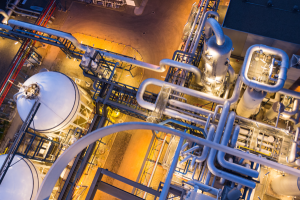
After the Fukushima accident, the PRC government rushed to announce that the country’s nuclear power sector will continue to grow following the comprehensive security checks at all nuclear power plants. Dozens of billions of dollars were poured into strengthening the security of the nuclear power plants under construction and those already in operation. China could not say no to the nuclear power, since the nation’s power demand has been steadily increasing, and the traditional coal-powered generation will soon fail to match it. Besides, the PRC is intending to reduce the number of its coal power stations due to the harm they cause to the environment.
At the moment, China has a world lead in expanding nuclear capacity. In 2015, PRC’s nuclear reactors generated 42 mln kWt, and this indicator is expected to double by 2020. A desire to make these plans a reality makes China seek help from Russia.
So, the construction of Tianwan Nuclear Power Plant in the Chinese Jiangsu province on the Yellow sea coast is still in progress. This power station is considered the largest site of Russia-China economic cooperation. The construction commenced in 1999 with two first units put in commercial operation in 2007. Their completion cost $3 billion. The construction project involved more than 150 Russian organisations and companies headed by JSC Atomstroyexport.
It will also be noteworthy to mention the institute Atomenergoproekt
Needless to say, there is more to Russia-China nuclear cooperation than Tianwan NPS. Russian specialists took part in the development of PRC’s uranium enrichment centres, construction of an experimental reactor in the vicinity of Beijing as well as other projects.
Back in 2013 Russia’s Rosatom received a proposal from the PRC to participate in the joint construction and operation of floating NPSs; moreover, China was willing to take care of a large part of the project finances.
Undoubtedly, Russia-China cooperation in the nuclear power sector has benefitted the both parties and will continue to do so and develop further. Yet, in the years passed since its initiation, China has developed its own nuclear technologies to such an extent that it is ready to export them and challenge Russia’s position on the world market. For instance, in March 2015, Rosatom lost a bid for construction of six NPSs in the SAR to Chinese companies. The tender priced at $93 billion was contested by companies from the USA, France and South Korea.
The main reason why the China National Nuclear Corporation gained the upper hand on such strong competitors is that China let the scientists from the SAR see the research being done there. Willingness of the Chinese company to make significant investments in the SAR economy also took its toll.
In June 2015, China’s Prime Minister Li Keqiang visited one of the major Chinese nuclear power design companies, China Nuclear Power Engineering Co Ltd., in order to witness the testing of the China-made reactor «Hualong One» («Dragon»). In his speech he noted: ‘Today China is considered the world’s number one in high-speed railway development, and now it is time to be the first in nuclear technologies’.
China’s zone of interests, besides the SAR, encompassed the Middle East countries, Argentina and even the Great Britain. Sure enough, South-East Asia has not been deprived of attention either.
The pace of the Chinese expansion is high and the Russian nuclear experts need to put a lot of effort in order to keep pace with competitors for the market segments. Openly competing with China for the Middle East, Russia is simultaneously searching for importers of its technologies in ASEAN states where Chinese influence is strong.
In this respect it is worth mentioning the International Energy Week that took place on October 30, 2015 in Singapore where it has been held annually since 2008. According to the opinion of a Rosatom representative that participated in the event, ASEAN can become one of the main producers of nuclear energy in the world and that will help them meet their own power needs without harming the environment and will noticeably boost the economy. ‘The nuclear sector creates new jobs, supports machine industry and construction, promotes scientific and technical expertise as well as education,” he said. However, before embarking on nuclear projects, ASEAN countries should sort out financial issues. They will need to create a special infrastructure and train specialists. Rosatom already supports its partners in Vietnam in the construction of the Ninh Thuan nuclear power station. And thus, similar type of support can be offered to other ASEAN countries that would wish to develop their own nuclear sector.
It is also important to establish public relationships with the ASEAN countries, which tend to treat nuclear power with scepticism, especially after the Fukushima disaster. In Vietnam, for instance, Rosatom created an information centre to promote awareness of the nuclear technologies. For example, there you can find information about the new Russian reactors, type VVER, that can withstand external impacts including 7-8 magnitude earthquakes. (As was mentioned above, these very reactors will be put in operation at the Vietnam’s Ninh Thuan NPS). Let us remind you that EAEU countries signed an agreement with Vietnam on free trade zone in May 2015. Russia considers this as the first step toward a deeper integration with the whole Asia-Pacific region. It also applies to the nuclear power cooperation. In addition to the Vietnamese plant, Rosatom participates in building of experimental reactor in Indonesia. Mianmar and Thailand expressed their interest in seeking Russia’s participation in developing the nuclear power share in their energy sectors. Yet, these are not all of the ASEAN countries, and Russia has to hurry to get on board of the remaining nuclear power markets before China, its partner and rival, does.
Dmitry Bokarev, political observer, exclusively for the online magazine “New Eastern Outlook”.
